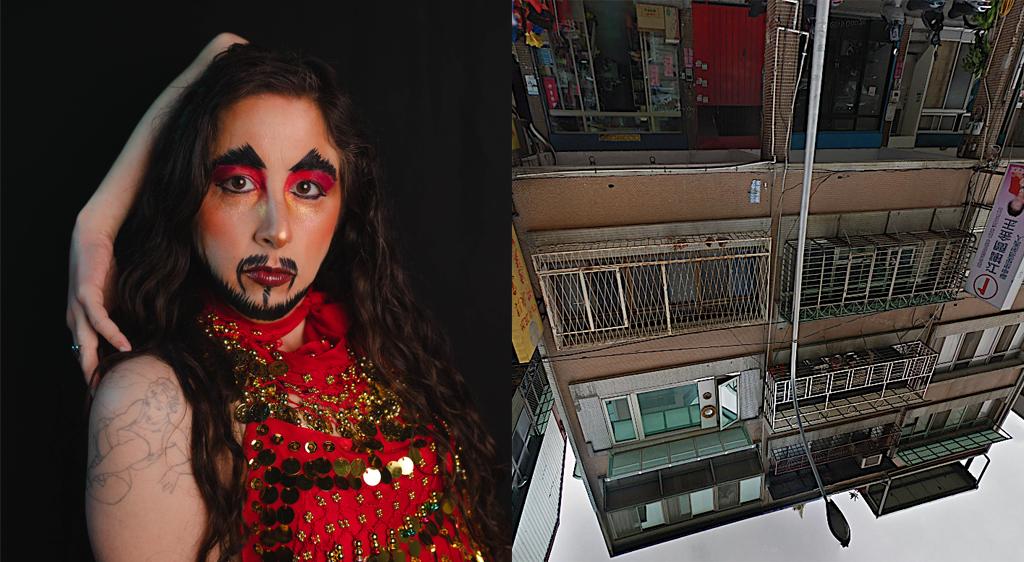I was first inspired by Kalidasa’s Meghadhuta (The Cloud Messenger) in 2009. At the time, I was exploring the role of the messenger in Indian texts and poetry. Often times the role of the messenger was simply stated – a person carrying a message from one lover to another. In dance, in some of the more commonly performed pieces, the messenger was often a sakhi (dear friend) of the nayika (heroine), and the nayika was usually desperately trying to convince her friend to deliver a message to her Lord. The nayika is usually informing her messenger of her lament, and is asking her to retrieve her Lord without delay. Her Lord is often a God – deemed inaccessible by the nayika thereby further validating the sakhi’s role. The analogy is pure and simple – as humans we seek union and even intimacy with something greater than ourselves. To me, the nayika’s plight represents, not the literal plight of women seeking union with their love, but of all people seeking union with something divine.
Of course, these generalizations do not to apply to every text chosen for dance (or to every person interpreting the pieces), but remain a recurring theme throughout centuries of writings and music compositions, from which many Bharatanatyam pieces are drawn from. Though the role of the female friend or sakhi in itself is a theme that could be studied for years, what was particular interesting to me was the role of non-human messengers. Messengers which range from the trusty Lord Hanuman, recognized by his ape-like features, who was the loyal go-between for Rama and Sita in the famous epic Ramayana, to the use of the kiliye (bird) sent by a the lovelorn nayika to her faraway Lord in the poem Solla Vallayo Kiliye by the great poet Bharatiyar, as well as so many others.
In my reading, I found that generally speaking there were a few classes of messengers (of the non-God variety). The first of these, as mentioned above, is the sakhi, a confidant of the nayika. Second is of the animal variety. I have so far read about bees, swans, birds, and a few others, but I will not go into great detail on those here. Lastly (which just means this is where I have landed in my research and does not mean that there are no more ways to send a message) came the insentient messengers, such as the wind and, of course, the clouds.
So finally, what struck a chord with me, were in fact the insentient messengers. They represented something very different from the sakhi, who I was most familiar with up until this point. In Kalidasa’s Meghadhuta, the cloud is an insentient being. The distraught lover (in this instance is a male demi-god) in his grief begins to see something sentient in the cloud, and begs the cloud to send a message to his faraway beloved. He attempts to convince the cloud to take the perilous journey by describing various sites the cloud will see on the way. Now from these points, many questions arise – does the cloud in fact become sentient? Or is the distraught lover seeing this transformation in his grief? What does this symbolize? And most importantly to me, what does all this mean for the love story? There are seemingly endless ways of interpreting, describing, and of course performing this epic poem and the associated themes; Nava is hoping to use the time during the PD residency program to discover the possibilities.
The last few months have been a mix of reading various translations and commentaries on Meghadhuta, while at the same time delving into our own personal interpretations of the text. In future posts, I will go through some of the resources and specific interpretations that influenced the work. But for now I can tell you that we have carefully chosen various lines from this 100+ verse poem that most inspired us. From these lines we have visualized various Bharatanatyam pieces, which we are using to tell this unique story. We are working closely with music composer G.S. Rajan to make our visions come alive, and his experience and artistry is really bringing this piece together.
As a preview, I will leave you with one of my favorite lines. Here, the male character, who is banished and separated from his love, describes the state of which the cloud might find his beloved. To me, this translation by Chandra Rajan (verse 86, Penguin Classics) beautifully captures the emotion of the moment.
“Longing for sleep, hoping in her dreams at least she would be the one with me in love, a sudden torrent of tears might wash a way those hopes….”
Share This!
More Good Stuff
‘Border / Line خط التماس’ by Jess Semaan and Halim Madi & ‘Sa Ating Ninuno (To Our Ancestors)’ by Kim Requesto December 5-6 & 12-13,
Unsettled/Soiled Group is a group of East, Southeast, and South Asian diasporic movers, makers, and settlers on Ramaytush and Chochenyo Ohlone land. Unsettled/Soiled Group is led by June Yuen Ting, one of CounterPulse's 2022 ARC Performing Diaspora artists and will debut Dwelling for Unsettling alongside VERA!'s Try, Hye!, Thursday through Saturday, December 8-10 & 15-17, 2022
Try, Hye! by Vera Hannush/VERA! & Dwelling for Unsettling by Unsettled/Soiled Group December 8-10 & 15-17, 2022 // 8PM PT // 80 Turk St, SF




